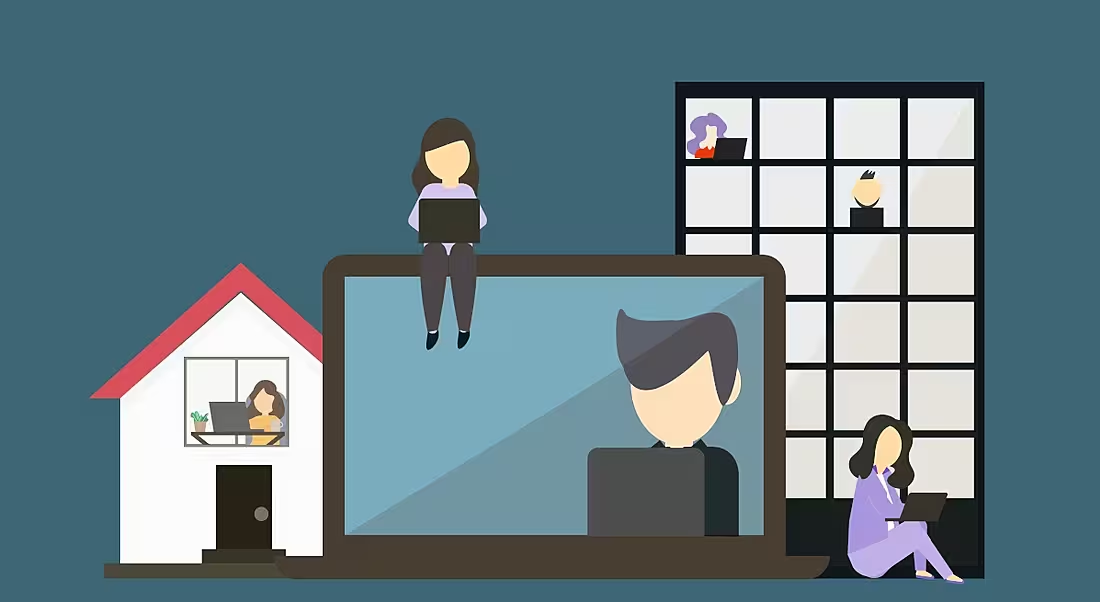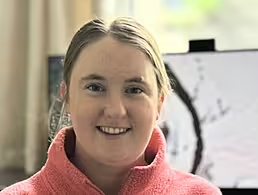These employee experience leads say plenty of team-building events and a flexible, empathy-led approach makes hybrid working a success.
There hasn’t been another time in our recent history when work and how people work – where, how and when they do it – has undergone such upheaval.
It’s testament to us all that as a society we managed to overcome the challenges forced upon us by the pandemic lockdowns. We adapted and supported each other in ways that probably would have gone beyond our comprehension just five years ago.
Technology undoubtedly became a lifeline through which we communicated with our co-workers. But there are two sides to every story and tech can be a bother as well as a boon.
Challenges and opportunities
“One of the challenges with these new ways of working is how to manage people’s attention amidst the stream of notifications, communication channels and discretions. There are now a multiplicity of ways that people within organisations can connect with each other,” said Fania Stoney, business development strategist at Great Place to Work.
“High trust leaders are aware of the need to promote open communication, transparency and regular check-ins – while not edging into the territory of being another distracting notification,” she adds.
For the companies featured on Best Workplaces in Tech 2023 list, the human connection has become more important than ever.
“Back in 2022, we reimagined the employee experience for our people to deliver better work-life balance,” says CluneTech’s head of employee experience Rachael O’Shea.
“This involved taking a much more human approach to how we work … Our people are now empowered to work in a way that works best for them, be that hybrid, remotely or in the office.”
O’Shea says that although most people have opted to work remotely since the policy change, CluneTech decided to overhaul its Kilkenny headquarters from a standard office into a space kitted out with meeting pods that is better suited for in-person collaboration for when workers do come in.
O’Shea describes the culture at CluneTech as “flexible”. It offers summer flexible hours for workers and personal days called Lifework Days, whereby staff can take an additional half day of paid leave each quarter for whatever they need to get done.
“These updates are not simply ‘improved benefits’ and instead, represent a hugely positive shift in our culture over the last number of years,” says O’Shea.
Proof is in the numbers
As for how employees feel about the new attitude, O’Shea jokes that “the proof is in the numbers”.
“This year has seen our most positive feedback to date, and the benefits are evident right across our Great Place to Work Trust Index Survey and quarterly pulse survey results. 85pc of our employees believe that they’re encouraged to balance their work and personal life, compared to 76pc in 2022.”
CluneTech has seen a 336pc increase in employee referrals. The company regularly holds in-person events, with “tailored” experiences like kayaking, pottery making and walking groups.
In-person networking events are critical to keeping company culture alive, believes Distilled’s chief people officer Laura Doyle.
‘We do make a huge effort to keep people connected too, but our employees really value being able to decide how to work themselves and we fully trust our employees no matter where they work’
– LAURA DOYLE
She says the company’s way of working is best described as hybrid. “We have two offices that remain open for employees that want to come in; our offices are set up in a hot desk manner and every desk has a monitor, keyboard, laptop stand, mouse etc. We have lockers for employees to keep items in. If employees want to come in, we want to make it easy for them to do so. All they have to do is bring their laptops in,” she says.
“Post-Covid our mantra was to have equality of experience for employees whether they are in the office or are working from home.”
This meant installing new tech in the offices’ meeting rooms and a conscious plan for everything to be conducted and shared over Zoom as a matter of course.
According to Doyle, the split between the full-time remote workers and the hybrid workers is 80pc and 20pc respectively.
With most people choosing the fully remote option, Distilled runs at least four company-wide meet-ups per year to keep all staff connected.
As well as those events, the company organises social breakfasts, hikes, weekly wellness periods and “company huddles” every month. Employees are encouraged to attend, but it is not mandatory.
“Employee wellbeing is high on our agenda,” Doyle explains, adding that it is a key to retaining staff as well as attracting new talent.
Managers at Distilled get an allocated budget for planning team-building events, and this is something the company tells interview candidates when they ask what the culture is like.
“One of the first questions you get asked at interviews is what’s your policy on remote work and having a hybrid workplace gives us the best of both worlds and is attractive to a wider pool of people,” says Doyle.
“Our team get-togethers mean that you still have that sense of connection with colleagues and feel part of something bigger. The choice of how you want to work is our employees’ and we are very supportive of that. We do make a huge effort to keep people connected too, but our employees really value being able to decide how to work themselves and we fully trust our employees no matter where they work.”
Her advice to other companies looking at implementing a similar hybrid strategy is to trust their workers. “You’ve hired great people, trust them to do their jobs.”
How hybrid benefits businesses, too
Amanda Kelly, head of employee experience at Version 1, agrees with the trust-led approach. She says that as “a people-led organisation” Version 1 asks its workers on a regular basis what they need from the company to do their best work. The company scooped the overall Great Place to Work award this year.
“We have asked for their preferences in terms of working remotely, in the office or hybrid, and unsurprisingly, very few people opted to return to the office five days a week, but the option is there for those that this style of working works for them.”
She points out that people have “considerably more time back in their day” without the requirement to be at the office. Like O’Shea, she uses the word “flexible” to describe the change in attitudes since the pandemic.
And it’s not just workers that are benefitting. Kelly describes how flexibility has “really opened up the talent pool” in terms of recruiting.
“This approach has also allowed us to recruit additional talented people, whether we are recruiting for people in Ireland, the UK, Spain or India, we don’t always have to be dictated by someone’s location,” she says.
‘One of the challenges with these new ways of working is how to manage people’s attention amidst the stream of notifications, communication channels and discretions’
– FANIA STONEY
That’s not to say that making the change to hybrid working has been completely seamless for any company.
For others thinking about adding hybrid elements to their culture, Kelly recommends they ask their staff for insights. Communication with all staff, no matter where they are based, is crucial. That way, problems are more likely to be ironed out if they are encountered from either the worker’s point of view or the employer’s point of view.
“It is understandable that not every organisation can adapt this type of approach,” Kelly says of hybrid working. It’s important to “be transparent” and give things a chance.
10 things you need to know direct to your inbox every weekday. Sign up for the Daily Brief, Silicon Republic’s digest of essential sci-tech news.




